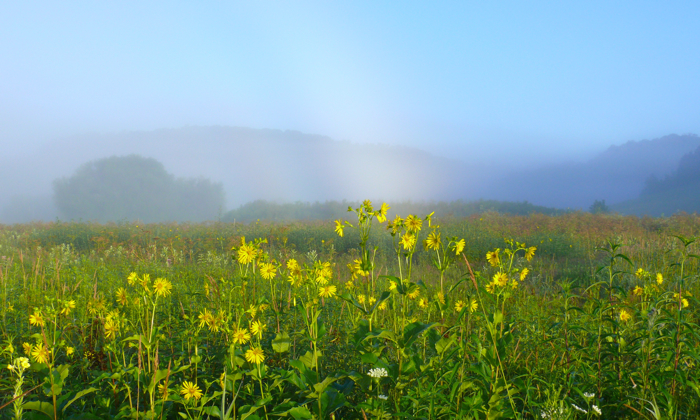This is the time of Sunflowers – they’re blooming everywhere. A few years ago, my friend Susan Marie wrote a wonderful children’s picture book about a sunflower: To Be Like the Sun. The book is the story of the life of a sunflower – a garden sunflower. So, for Susan Marie, this is pictures and information about some of our native sunflowers.
This sunflower is soaking up the sun. It’s a Jerusalem Artichoke (Helianthus tuberosus). Jerusalem Artichokes are not really artichokes – they’re sunflowers – but both artichokes and sunflowers are in the same plant family – the Compositae. Tuberosus means “thickened roots”, which refers to the thick fleshy edible roots. Sunflowers are native to the Americas, and Jerusalem Artichokes were cultivated as a crop by Native Americans. The roots are sometimes available in supermarkets. The plants grow in woodland edges.

Most sunflowers are in the genus Helianthus. Helianthus comes from two Greek words: helios, meaning “sun”, and anthos, meaning “flower”. This one is Tall Sunflower – Helianthus giganteus. It grows in wet sunny places. Unlike cultivated sunflowers, the plants don’t really orient toward the sun, but our flowers usually face east, towards the rising sun.


Sunflowers, like other plants in the Composite Family, are actually a group of flowers in one large head. Around the outside of the head are the ray flowers – each with one long, strap-like “petal”, and a tiny tube which holds the flower parts. The flat center of the head has numerous tubular flowers, with no showy petals. Insects land on the head, and can spend a long time extracting the nectar and pollen from each flower.
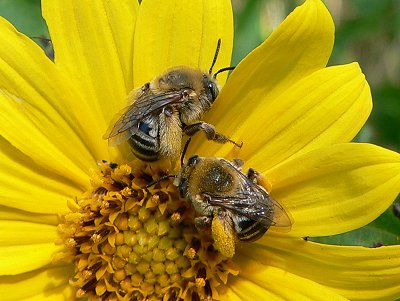
Tall Sunflowers (Helianthus giganteus) in our wetland.
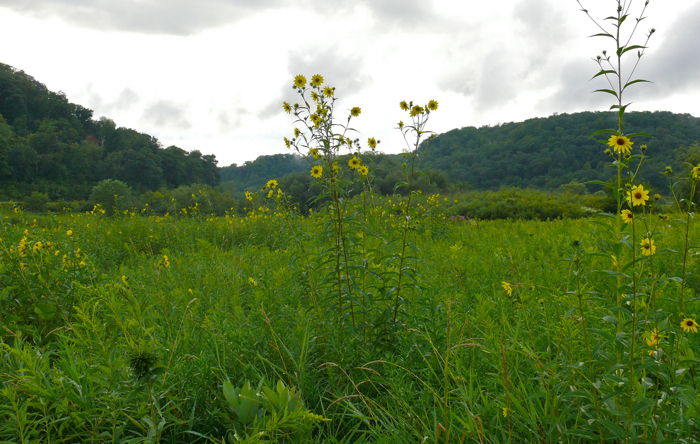
Silphiums are a genus of related plants, with sunflower-like blossoms. Compass Plant (Silphium laciniatum), has leaves that turn during the day to follow the sun.
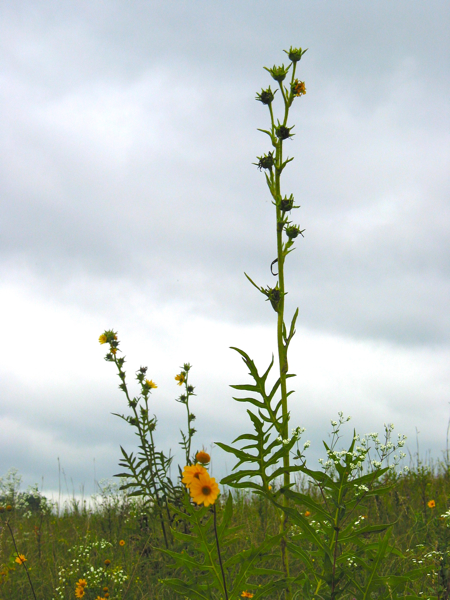
Another Silphium is called Cup Plant (Silphium perfoliatum). Its leaves grow opposite each other, and grow together at the stem to form cups. Rain and dew collect in these cups.
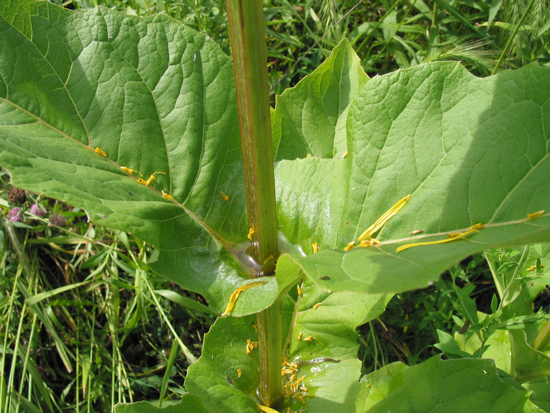
Cup Plant (Silphium perfoliatum)

Cup plant flower

This is a newly opened False Sunflower – another name for it is Oxeye. Its latin name, Heliopsis helianthoides, means that it looks like a sunflower. Only the flowers in the outermost circle of this head are open. Sunflower heads are a good place to look for interesting insects.
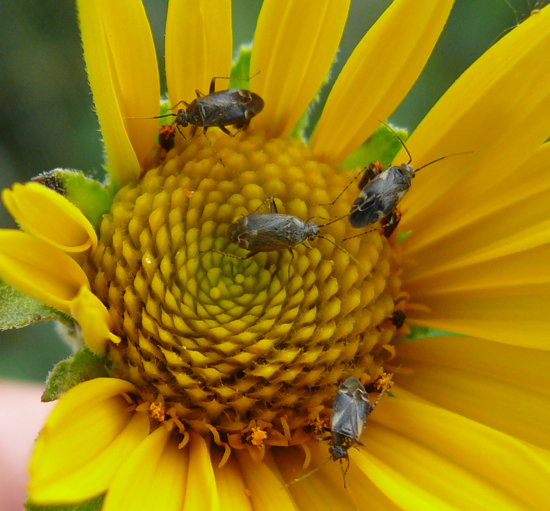
Another Oxeye flower with a Plant Bug (Neurocolpus sp.). This bug is acting as a pollinator – it’s covered with gold pollen grains which will be moved to other flowers that the bug touches.
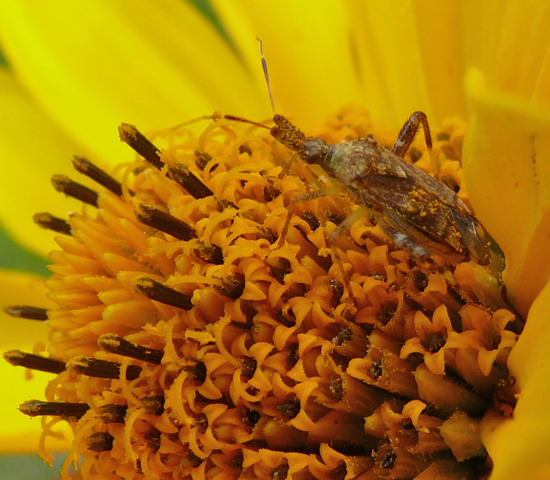
Sunflowers in our wetland with a misty rainbow.
